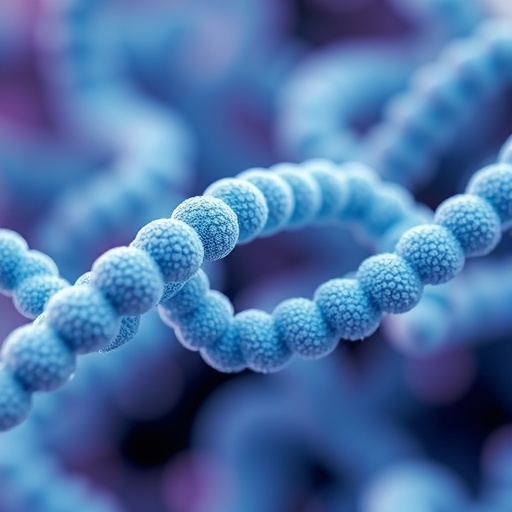In a groundbreaking leap forward in the field of protein engineering and drug design, researchers at the University of Washington’s Institute for Protein Design have unveiled a novel method to precisely control the activity of therapeutic proteins in real time. This pioneering work, published in the prestigious journal Nature on September 24, 2025, introduces a revolutionary concept that transcends traditional approaches of modulating drug efficacy by dosage. Instead, it focuses on engineering proteins that can be rapidly switched off, even after reaching their full biological effect, thereby opening new horizons in creating safer and more tunable medicines.
Proteins are the molecular workhorses of biological systems, commonly mediating interactions by binding tightly to partner molecules, driving immune responses and regulating cellular functions. While this molecular stickiness is fundamental to many physiological processes, it poses significant challenges for medicines such as therapeutic antibodies and cytokines. Once activated, these drugs often persist in their activity, complicating the management of unforeseen adverse reactions. The innovative strategy developed by the research team addresses this longstanding issue by imparting a regulator mechanism directly into the protein’s binding dynamics, enabling an on-demand ‘off’ switch.
The core technical advancement here is the design of custom proteins whose binding duration with their targets can be precisely controlled. Through advanced computational design, the researchers engineered binding complexes that are stable under normal conditions but can be destabilized almost instantly upon introduction of a separate small molecule called an “effector.” This effector molecule induces a strained conformation in the protein complex, accelerating its dissociation far beyond natural timescales—from typical minutes-long interactions to mere seconds. Such rapid facilitated dissociation not only provides finer temporal control over protein activity but also reduces prolonged exposure that may lead to toxic side effects.
The team demonstrated this concept most strikingly in their work with interleukin-2 (IL-2), a potent cytokine extensively studied for its immunotherapeutic potential against cancer. Despite its therapeutic promise, IL-2’s clinical use has been hampered by severe toxicities and systemic immune activation. By engineering a switchable IL-2 variant, they enabled precise temporal control over its immune-stimulating functions. In laboratory tests, this engineered IL-2 activated human immune cells as expected, but crucially, its activity could then be rapidly quenched upon administration of the effector molecule, effectively silencing the immune response on demand. This switchability holds great promise for modulating immune therapies with unparalleled precision.
The underlying computational methodology involved intelligent protein design algorithms that predict and manipulate energy landscapes to favor rapid complex dissociation when triggered. This represents a paradigm shift from classical affinity engineering that focuses solely on binding strength. By targeting the kinetics of dissociation, the researchers added a novel dimension to molecular control, effectively creating therapeutic agents that act like programmable biological timers. This opens avenues for developing drugs with customizable activity windows tailored to clinical needs and patient safety profiles.
Beyond cytokine therapies, the team also applied this approach to develop enhanced molecular sensors with unprecedented responsiveness. By introducing the switch into a bioluminescent enzyme, they engineered a sensor whose light output could be toggled on and off within seconds. Such responsiveness was harnessed to create a new class of rapid coronavirus sensors capable of detecting SARS-CoV-2 approximately 70 times faster than current protein-based diagnostics. These advances suggest broad applicability in diagnostics, environmental monitoring, and real-time disease marker detection.
The collaboration extended internationally and involved multiple research groups contributing complementary expertise. Biophysical measurements conducted by the Piehler Lab at Osnabrück University elucidated the mechanistic details of complex destabilization. Cellular activity assessments by the Garcia Lab at Stanford University confirmed functional modulation of immune signaling. Moreover, molecular dynamics simulations from the Zuckerman Lab at Oregon Health & Science University provided atomistic insights into the conformational transitions driving facilitated dissociation. This multidisciplinary synergy was critical to the project’s success and the robustness of its findings.
This work was funded by a constellation of prominent institutions, including The Audacious Project, the Bill and Melinda Gates Foundation, Howard Hughes Medical Institute, and the National Institutes of Health, underscoring the significance and potential impact of this technology on global health. A provisional patent application has been filed by the lead scientists to protect these inventions, signaling the translation potential from bench to bedside.
From a therapeutic standpoint, the ability to precisely tune the timing of protein activity introduces exciting possibilities for cancer immunotherapy. Historically, immune-stimulating agents have been difficult to regulate, raising the risk of severe toxicities like cytokine release syndrome. The new facilitated dissociation approach could prevent such adverse effects by halting drug activity immediately at the earliest signs of toxicity, effectively enhancing patient safety and treatment outcomes. Another prospective strategy includes delivering high-dose cytokine bursts for rapid cancer cell elimination, followed by swift deactivation to limit immune overactivation.
Moreover, the implications for biomedical engineering extend well beyond oncology. Customizable kinetic control of protein interactions could revolutionize the design of therapeutic antibodies, enzyme replacements, and protein-based drug delivery systems. Additionally, environmental sensors and diagnostic tools will benefit from this technology’s rapid response and specificity, accelerating detection times and improving real-time monitoring capabilities.
In summary, the design of facilitated dissociation mechanisms represents a transformational advance in protein engineering, opening new avenues for precision medicine and molecular diagnostics. By integrating computational design with experimental biophysics and cellular biology, the researchers have created a versatile platform for controlling the temporal aspects of protein function. This innovation stands poised to impact a broad spectrum of biomedical applications, heralding a new era of smarter, safer, and more adaptable therapeutics.
Subject of Research: Not applicable
Article Title: Design of facilitated dissociation enables timing of cytokine signalling
News Publication Date: 24-Sep-2025
Web References:
Image Credits: Ian C. Haydon, UW Medicine Institute for Protein Design
Keywords:
- Biochemical engineering
- Biomedical engineering
- Proteins
- Cancer
- Infectious diseases




